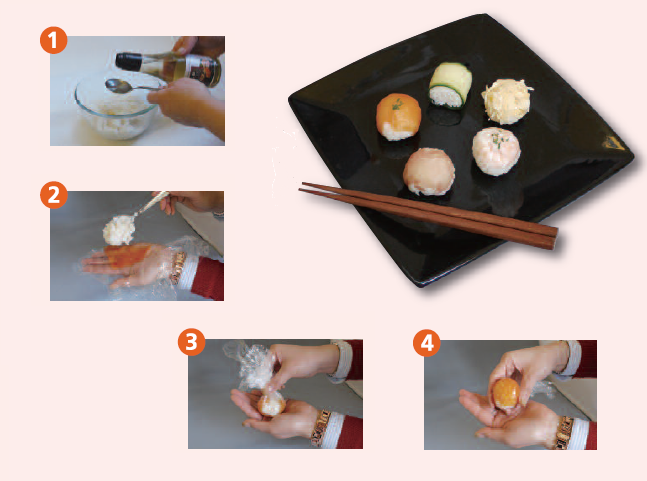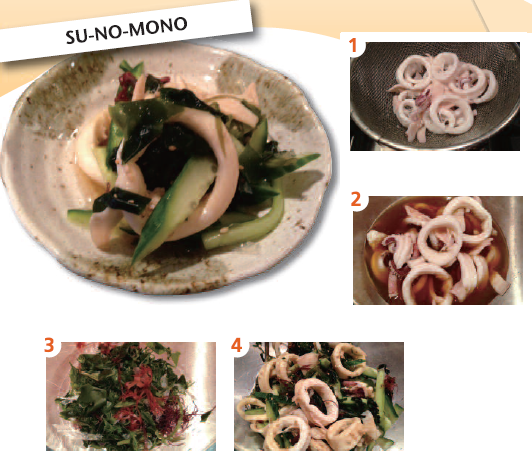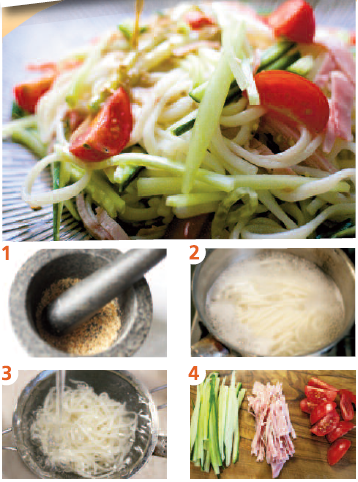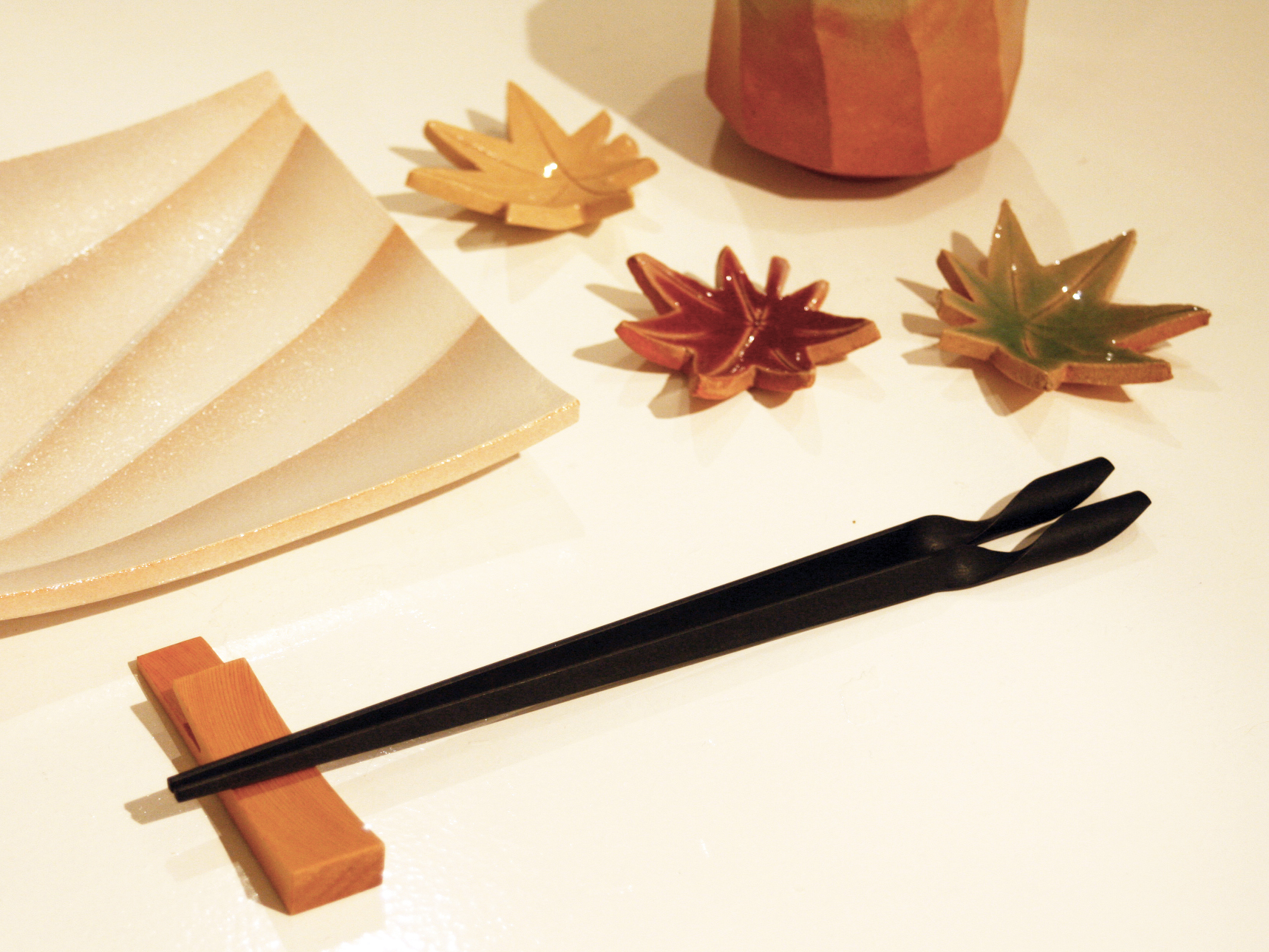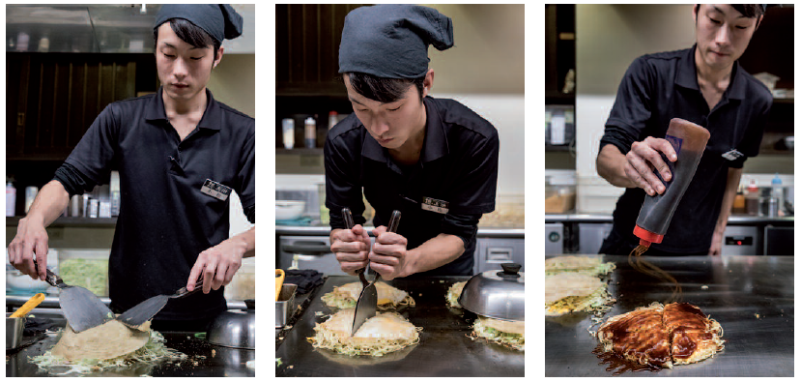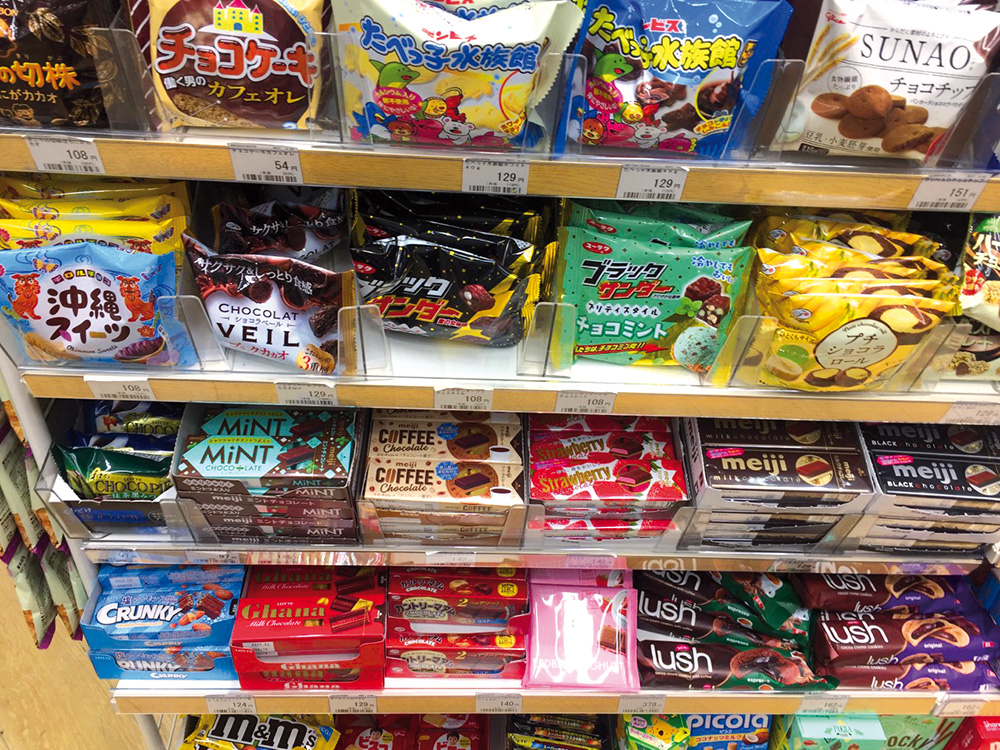

In the rainy season, products flavoured with mint, a symbol of freshness, make an appearance.
In the mini-markets, one of the most interesting shelves is the sweet shelf with its items that change according to the season.
For first-time visitors to Japan, initiation to the konbini (mini-markets open 24/7) is almost a mandatory rite. Who hasn’t taken advantage of such places to get hold of necessary items (an umbrella, cables, battery, toiletries, stationery…), not to mention newspapers, drinks and food. They sell almost everything you need: alcoholic and non-alcoholic drinks, instant tea and coffee as well as food including bento (lunch boxes), sandwiches and onigiri (rice balls), small ready-made dishes, bread and cakes, instant noodles, savoury snacks, and for the sweettoothed there are biscuits, sweets and chocolates. Curiously, it’s on this shelf that a certain “seasonality” can be observed. seasonal sweets and manufactured bakery goods, do they exist? Yes, they really do…
At the beginning of spring, the sweet section is filled with products flavoured with “cherry blossom”. In June, during the rainy season, the weather is humid throughout the country, and the shelves are full of items smelling of mint, packaged in green and blue to represent freshness. Of course, citrus fruits and melons also have their time and place as well as chestnuts, which fill the shelves at the beginning of October.
This parade of “seasonal products” is partly due to the sales distribution system in the supermarket sector where 60% to 80% of products need to be regularly renewed. This is hard for us to imagine in the West where we are used to finding the shelves always filled with identical products. This system allows the Japanese to continually discover different tasting tastes, but it means food companies must always be on the look out for new flavours. This quest is equally important for savoury products, but sweet manufacturers can vary tastes and attract consumers by simply using different flavours in the same way as a “local confectioner”. This trend has increased in the last few years, and behind it lies the wish to compensate for the absence of seasonality in manufactured food products. In a way, particularly in konbini where it’s almost impossible to find “unprocessed products” such as vegetables or fruit, these symbolic seasonal changes are needed to give the impression of something “natural”.
This doesn’t preclude great classic flavours like “strawberry”, one of Japan’s favourite fruits. But the twist in the story is that strawberries are spring fruits, and the brands of strawberry-flavoured chocolate are obliged to state “strawberryflavoured chocolate, can be eaten all year round”, as though they had invented the technology to allow their chocolate to be made with fresh strawberries whatever the time of year.
In the konbini, this world of industrial wonders, everything is a game, so it’s no surprise that symbolic items are consumed more than any others…
SEKIGUCHI RYOKO

